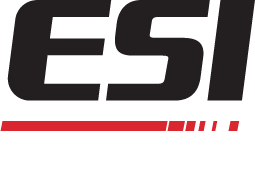It's not surprising that printing companies want the ability to produce the best possible products in the most cost effective manner. That’s fundamental to operating a successful business. Many companies from all over the world claim to have the latest and best innovations to cut costs and improve image quality.
Read MoreeBeam technology can help packaging companies simplify their substrates by moving from reverse printed laminations to high gas barrier, multilayer monoweb coextruded films. These high barrier monoweb films can be surface printed with or without first down white. The first down white, ink and varnish can all be energy curable.
Read MoreWhen businesses are looking to increase profits, while providing a better final product to their customers, they will often take a hard look at their materials and processes. What areas are generating excess waste and cost? Where can we improve efficiency without comprising the quality of the final product, and even improve upon the deliverable to clients?
Read MoreThe flexographic printing market isn't slowing down—due to the wide range of package applications, cost and environmental concerns, more and more companies are using flexo printing for their final products. As a result, printers are trying to find innovative ways to take a better final product to their clients, at a more affordable rate, while cutting down on their own waste and ink use.
Read MoreIn the world of flexible packaging printing, or really anywhere within the Flexo printing industry, the goal is to produce amazing and brilliant final images in a manner that is cost effective, fast, reliable, and safe. Over the last two decades, technology and innovation have made huge improvements to the Flexo industry, streamlining processes and driving efficiency into the operation.
Read MoreThe applications and markets within the flexible packaging industry continue to grow without signs of slowing down. Due to the product’s on-the-shelf appeal to consumers, more efficient uses and options for storing is experiencing unprecedented growth in the U.S. From 2012 to 2013, the U.S. flexible packaging market grew 3 percent, from $26.7 billion to $27.5 billion.
Read MoreWith Gravure printing the image is etched onto a metal plate or cylinder surface, and as you may expect, the final print product can be a very fine, detailed image. The Gravure process for some printing applications, however, is not as efficient, or affordable, and may not have the quick flexibility to adapt to different print run lengths, colors, and actions.
Read MoreWhen it comes to printing, there are many ink options based on the type of substrates , and capabilities of the operation. Depending on the use, for example, there are Lithographic inks, Flexographic inks, Gravure inks, Letterpress inks, Digital inks and more. Each printing application needs specifically engineered ink that will help maximize efficiency, output,and profits while producing an excellent final product.
Read MoreOver the past 15 years, the world of flexible packaging has seen a lot of changes. New environmental and safety regulations have forced packages to alter their shape, chemical composition and even how they open and close. But that has not slowed down the growth of the industry.
Read MoreThere are four main factors when examining the true value of ink used in flexible package printingand other applications: 1. Quality—what is the final visual result of the printed product. Are there smears? Did the ink lay down properly? 2. Cost—what kind of cost benefits or increases did the specific ink you chose cause? 3. Environmental—does the ink you use result in unnecessary harm to the environment or cause the printing operation to pass certain regulatory tests and certifications? 4. Safety—the ink that is used, is it safe for both what’s going into the package and for the machine operators and transporters? Let’s examine each numbered point as it relates to solvent ink vs. electron beam ink:
Read More
